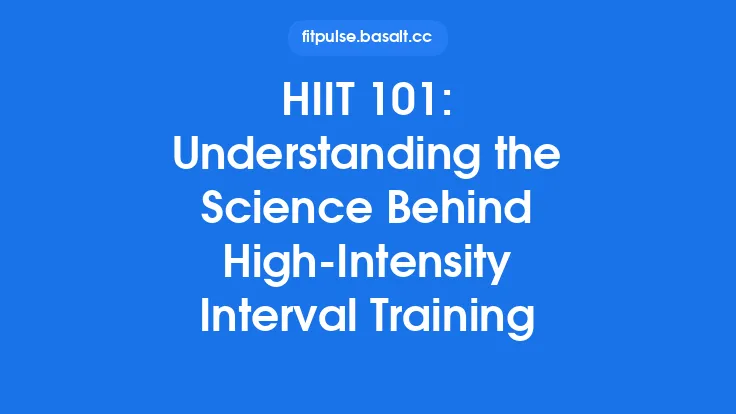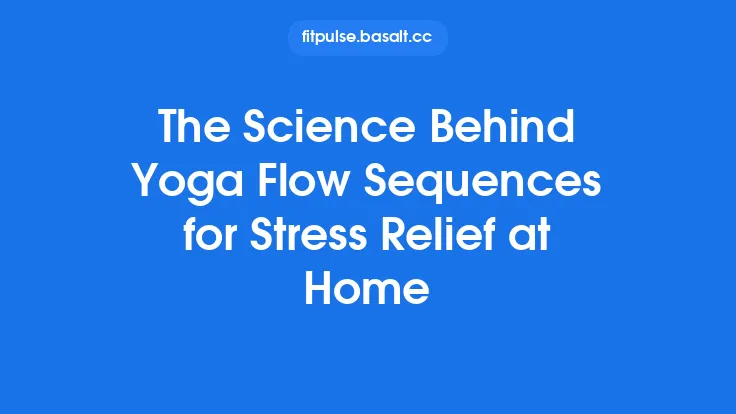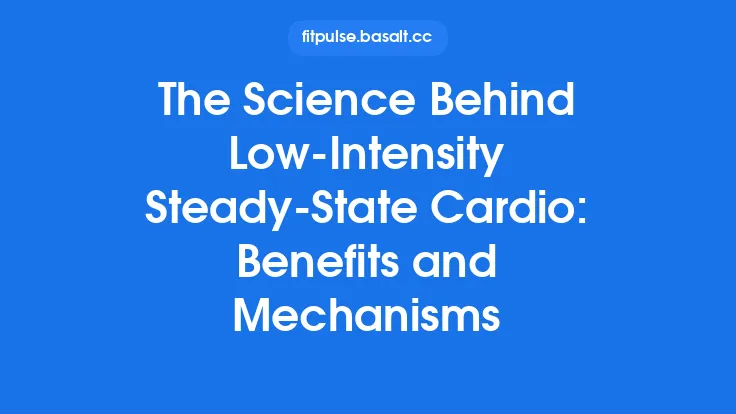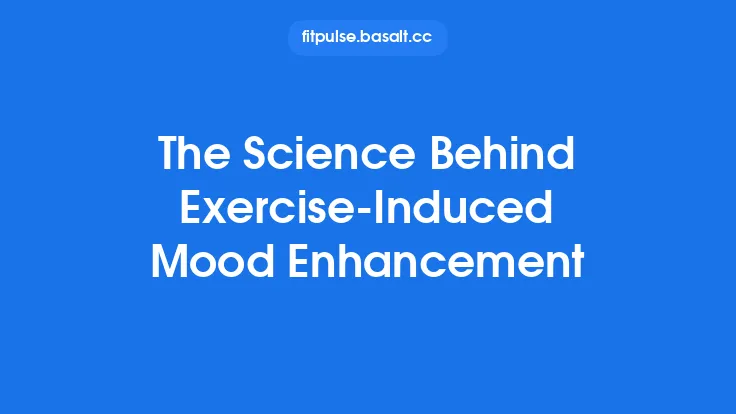Stress is an inevitable part of life, especially for athletes, high‑performers, and anyone juggling demanding schedules. While a certain amount of stress can sharpen focus and boost performance, chronic or poorly managed stress leads to mental fatigue—a state where cognitive resources are depleted, motivation wanes, and decision‑making suffers. Understanding the underlying science equips you to recognize early warning signs, intervene effectively, and build a recovery framework that supports both mind and body over the long term.
The Physiology of Stress
At its core, stress is the body’s adaptive response to any perceived threat or challenge. This response is orchestrated by two interlinked systems:
- The Hypothalamic‑Pituitary‑Adrenal (HPA) Axis
- Hypothalamus releases corticotropin‑releasing hormone (CRH).
- Pituitary gland secretes adrenocorticotropic hormone (ACTH) in response.
- Adrenal cortex produces cortisol, the primary glucocorticoid that mobilizes energy, modulates immune function, and influences brain activity.
- The Sympathetic‑Adrenal‑Medullary (SAM) Axis
- Activation triggers the release of catecholamines—epinephrine and norepinephrine—from the adrenal medulla.
- These hormones increase heart rate, blood pressure, and glucose availability, preparing the body for “fight‑or‑flight.”
Both axes operate on a rapid (seconds to minutes) and a slower (hours to days) timescale. In acute stress, the surge of catecholamines is followed by a cortisol peak that helps restore homeostasis. When stressors persist, the HPA axis remains chronically activated, leading to elevated baseline cortisol, altered circadian rhythms, and a cascade of downstream effects on cognition and mood.
Mental Fatigue: How It Manifests and Why It Occurs
Mental fatigue is not simply feeling “tired.” It reflects a measurable decline in the brain’s capacity to sustain high‑level cognitive performance. Key characteristics include:
- Reduced attentional control – difficulty filtering irrelevant information.
- Slower processing speed – longer reaction times and delayed decision‑making.
- Impaired working memory – challenges holding and manipulating information.
- Decreased motivation – a sense of “mental heaviness” that discourages effort.
Neuroscientifically, mental fatigue is linked to:
- Prefrontal Cortex (PFC) Dysregulation – The PFC, responsible for executive functions, is highly sensitive to cortisol. Prolonged exposure diminishes synaptic plasticity and reduces glucose metabolism in this region.
- Neurotransmitter Imbalance – Chronic stress depletes dopamine (affecting reward processing) and serotonin (affecting mood regulation), while increasing glutamate excitotoxicity, which can impair neuronal signaling.
- Inflammatory Cytokines – Elevated cortisol can paradoxically increase pro‑inflammatory cytokines (e.g., IL‑6, TNF‑α) that cross the blood‑brain barrier, contributing to “sickness behavior” and cognitive sluggishness.
Collectively, these changes create a feedback loop: mental fatigue reduces the ability to cope with stress, which in turn exacerbates physiological stress responses.
Key Biological Markers of Stress and Fatigue
Monitoring objective markers can help differentiate transient stress from chronic overload:
| Marker | What It Indicates | Typical Measurement Method |
|---|---|---|
| Cortisol (salivary, serum, or hair) | HPA‑axis activation; chronic elevation signals allostatic load | Saliva (morning/evening), hair (months) |
| Alpha‑amylase (saliva) | Sympathetic activity; rises quickly with acute stress | Saliva assay |
| Heart Rate Variability (HRV) | Autonomic balance; lower HRV = higher sympathetic dominance | Wearable ECG or chest strap |
| Blood Glucose & Lactate | Energy substrate availability; stress‑induced hyperglycemia | Finger‑stick or lab draw |
| Inflammatory Cytokines (IL‑6, CRP) | Systemic inflammation; elevated in prolonged stress | Blood test |
| Neurocognitive Performance (e.g., Stroop, N‑back) | Functional readout of mental fatigue | Computerized testing |
Regular tracking—especially of HRV and cortisol rhythms—provides a baseline to detect deviations that warrant intervention.
The Role of Sleep in Stress Recovery
Sleep is the single most potent natural regulator of the HPA axis and autonomic balance. During deep (slow‑wave) sleep:
- Cortisol secretion follows a circadian dip, allowing the brain to clear metabolic waste via the glymphatic system.
- Growth hormone (GH) peaks, supporting tissue repair and neuroplasticity.
- Synaptic downscaling occurs, pruning excess neural connections formed during wakefulness, which restores cognitive efficiency.
Conversely, fragmented or insufficient sleep leads to:
- Elevated evening cortisol, blunting the normal diurnal decline.
- Reduced HRV, indicating sustained sympathetic tone.
- Impaired PFC function, manifesting as poorer decision‑making and heightened emotional reactivity.
Practical sleep hygiene for stress recovery includes:
- Consistent timing – Aim for a 90‑minute sleep cycle alignment (e.g., 10 p.m.–6 a.m.).
- Dark, cool environment – ≤ 18 °C and blackout curtains to promote melatonin.
- Pre‑sleep wind‑down – Limit blue‑light exposure and high‑intensity mental tasks at least 60 minutes before bed.
- Strategic napping – 20‑minute power naps can restore alertness without disrupting nighttime sleep architecture.
Nutrition and Hydration for Mental Resilience
The brain consumes ~20 % of the body’s resting metabolic energy, making nutrient availability critical for stress tolerance.
- Complex Carbohydrates (e.g., whole grains, legumes) provide a steady glucose supply, preventing hypoglycemia‑induced irritability.
- Omega‑3 Fatty Acids (EPA/DHA) incorporate into neuronal membranes, supporting neurotransmission and reducing inflammation.
- B‑Vitamins (B6, B9, B12) are co‑factors in neurotransmitter synthesis; deficiencies correlate with heightened cortisol responses.
- Magnesium modulates NMDA receptor activity and has a calming effect on the nervous system.
- Polyphenols (e.g., flavonoids in berries) exhibit antioxidant properties that protect against oxidative stress in the brain.
Hydration status directly influences cognitive performance. Even a 2 % body‑water loss can impair attention and working memory. Aim for 2–3 L of water daily, adjusting for sweat loss during training.
Physical Activity and Its Dual Role
Exercise is a paradoxical stressor: it activates the HPA axis acutely but, when performed regularly, enhances the body’s stress‑buffering capacity.
- Acute Response – During high‑intensity bouts, cortisol and catecholamines rise, mobilizing energy.
- Adaptation Phase – Repeated exposure leads to down‑regulation of cortisol receptors and up‑regulation of anti‑inflammatory cytokines (IL‑10).
- Neurogenic Effects – Exercise stimulates brain‑derived neurotrophic factor (BDNF), promoting synaptic plasticity and resilience in the PFC and hippocampus.
Key considerations to avoid overreaching:
- Periodization – Alternate high‑intensity weeks with moderate or recovery weeks to allow HPA axis reset.
- Intensity Monitoring – Use perceived exertion (RPE) and HRV to gauge systemic load.
- Recovery Modalities – Incorporate low‑impact activities (e.g., swimming, yoga) that promote circulation without excessive sympathetic activation.
Recovery Strategies Beyond the Gym
While training‑related recovery is essential, mental fatigue often stems from non‑physical stressors (work, relationships, academic pressure). Complementary strategies include:
- Progressive Muscle Relaxation (PMR) – Systematically tensing and releasing muscle groups reduces sympathetic output, measurable by a rise in HRV.
- Biofeedback Training – Real‑time visual or auditory feedback on heart rate, skin conductance, or respiration enables individuals to learn voluntary control over autonomic responses.
- Cold‑Water Immersion (CWI) – Brief exposure (5–10 minutes at 10–15 °C) can attenuate cortisol spikes post‑stress, though the evidence is strongest for post‑exercise recovery.
- Nature Exposure – Time spent in green spaces lowers cortisol and improves mood, a phenomenon termed “forest bathing.”
- Structured Downtime – Scheduling regular, technology‑free periods prevents cognitive overload and supports the brain’s default mode network (DMN) restoration.
Monitoring and Managing Stress Over Time
A dynamic, data‑driven approach helps maintain equilibrium:
- Baseline Assessment – Record resting HRV, morning cortisol, sleep duration, and subjective stress (e.g., Perceived Stress Scale).
- Weekly Check‑Ins – Update metrics and note any deviations (e.g., HRV drop > 10 % or cortisol elevation).
- Trigger Identification – Correlate spikes with life events, training loads, or dietary changes.
- Intervention Protocol – Apply a tiered response:
- Tier 1: Adjust sleep hygiene, increase hydration, add a PMR session.
- Tier 2: Reduce training intensity, incorporate a recovery day, schedule a biofeedback session.
- Tier 3: Seek professional support (e.g., sports psychologist) if mental fatigue persists beyond two weeks despite Tier 1‑2 measures.
Documenting trends over months reveals patterns of allostatic load, enabling proactive adjustments before performance deteriorates.
Practical Tips for Sustainable Stress Management
- Create a “Stress Calendar.” Mark high‑stress periods (e.g., competition weeks, project deadlines) and pre‑plan recovery actions.
- Leverage Micro‑Breaks. 2‑minute eyes‑closed breathing or stretch breaks every hour can reset autonomic balance.
- Prioritize “Digital Sunset.” Shut down screens at least 30 minutes before bedtime to protect melatonin production.
- Adopt a Balanced Macronutrient Ratio. Aim for 45‑55 % carbs, 20‑30 % protein, 20‑35 % fats, with emphasis on low‑glycemic sources.
- Stay Hydrated with Electrolytes. Sodium, potassium, and magnesium in water help maintain neuronal excitability under stress.
- Use a Simple HRV App. Daily morning readings provide a quick snapshot of recovery status.
- Cultivate Social Support. Regular, meaningful interactions buffer cortisol responses and improve mood.
By integrating physiological insight with concrete lifestyle adjustments, you can transform stress from a performance‑limiting foe into a manageable, even motivating, component of your training ecosystem. The science of stress and mental fatigue is complex, but the principles of balance, monitoring, and targeted recovery remain timeless—providing a solid foundation for sustained mental resilience and optimal performance.





